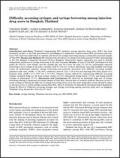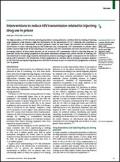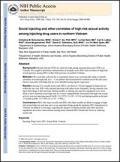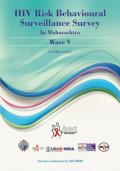Publications on People Who Inject Drugs (PWID)

Resource | Publications,
Thailand has traditionally pursued an aggressive enforcement-based anti-illicit drug policy in an effort to make the country "drug-free." In light of this ongoing approach, we sought to assess impacts of enforcement on drug use behaviors among a cohort of injection drug users (IDU) in Thailand.

Resource | Publications,
Thailand's longstanding HIV epidemic among injection drug users (IDU) has been attributed, in part, to the Thai government's unwillingness to implement evidence-based HIV prevention interventions. This study was undertaken to examine risk factors for syringe borrowing among a community-recruited sample of Thai IDU.

Resource | Reviews and Snapshots,
The high prevalence of HIV infection and drug dependence among prisoners, combined with the sharing of injecting drug equipment, make prisons a high-risk environment for the transmission of HIV. Ultimately, this contributes to HIV epidemics in the communities to which prisoners return on their release. We reviewed the eff ectiveness of interventions to reduce injecting drug use risk behaviours and, consequently, HIV transmission in prisons.

Resource | Publications,
As yet, little information is known about the size, distribution, and characteristics of IDU and sex worker sub-populations in Afghanistan. Therefore, the World Bank (WB) agreed with the Ministry of Public Health (MOPH) to contract with the University of Manitoba (UM) to conduct an assessment of these three key, high risk populations in three cities of Afghanistan: Mazār-i-Sharif, Jalalabad, and Kabul.











